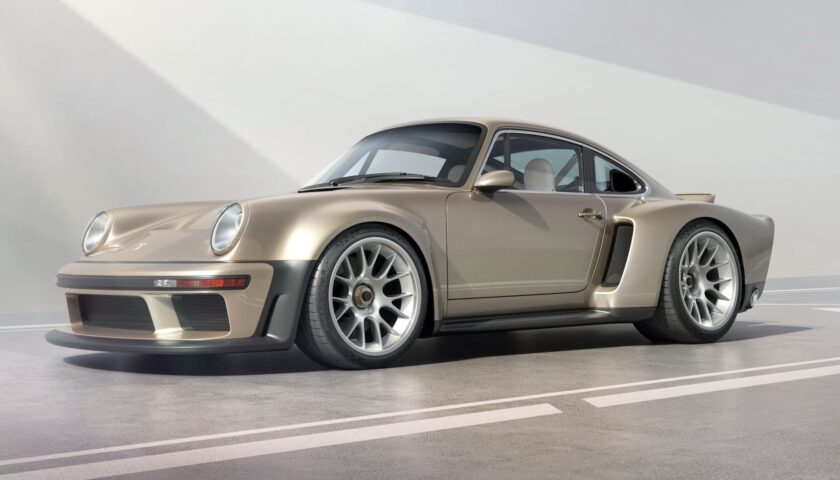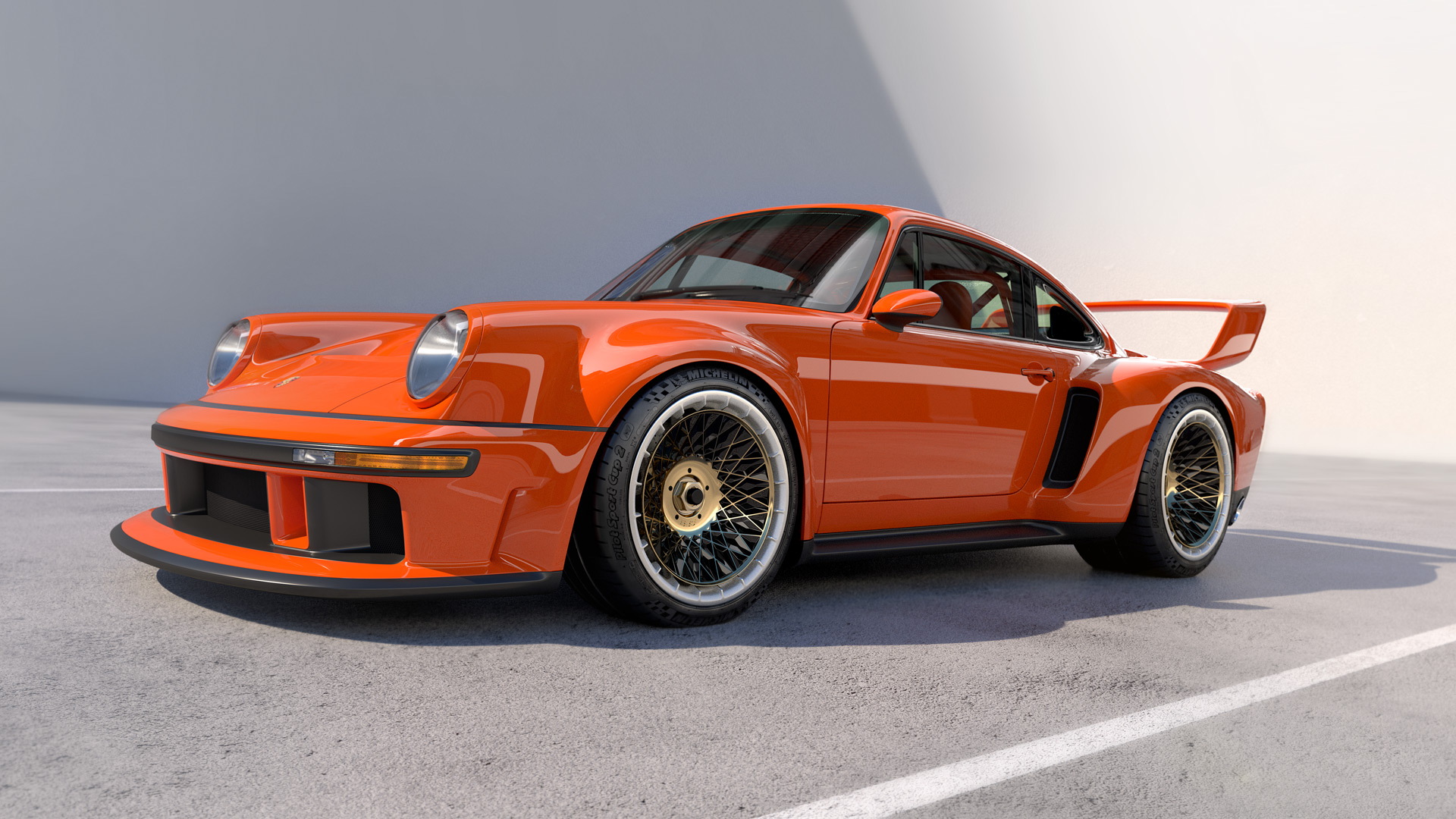The 934/5 racers of the 1970s served as inspiration for the fusion of the Dynamic, Lightweight, and Turbo Study programs.
There is no shortage of companies dedicated to making classic Porsche 911s look and perform like newer models, but Singer is still held up as an example of the genre. And just when the ‘other’ companies seem to be closing the gap, Singer takes a giant leap forward (or is it backwards?) and everyone is left wondering what the hell just happened.
The latest Singer project is a culmination of Rob Dickinson and his team’s experiences with the Dynamic and Lightweight Study and Turbo Study projects, as well as their deep admiration for the classic 934/5 racers that dominated U.S. competition in the late 1970s. The DLS-Turbo has quickly risen to the top of our wish list of Porsches.

You’d be hard pressed to tell that it was based on a 964-generation 911 from the early 1990s, as is the case with all of Singer’s vehicles; no road or even race 964 ever looked this wild, or wide. The Blood Orange model shown here is the Track version, while the Moet Blanc model is slightly tamer and comes only in Road trim.
Each model’s massive carbon fenders and extra-boxy back ends are outfitted with enormous air intakes to cool the thirsty 3.8-liter turbocharged flat six engine. The Track model differs from the road going version by having a huge two-deck wing and an even larger front splitter. You just can’t decide which version is better, can you? Singer offers vehicles with interchangeable wings, so you can choose the one that best suits your mood (and your aptitude with a wrench) on any given day.

Both vehicles look outrageous when viewed from the front three-quarters due to the protruding front lip and the way the rear track appears to extend a good foot (300 mm) from the body line, but they look even crazier when viewed from the rear, and not just because each one looks like it’s giving birth to a G-series 1980s 911. Both cabins are beautiful; they have different materials, paint jobs, and features, but they share the same heavily bolstered sports seats and dials that borrow design cues from Porsche instruments from the 1960s and the 1980s.
Over 700 Horses
The turbo part of the DLS-Turbo is where the magic happens. No matter which body you go with, you’ll be getting the same 3.8-liter twin-turbo flat six engine that generates over 700 horsepower (710 PS). The naturally aspirated 4.0 DLS produces 500 hp (507 PS), while the 911 Turbo Study’s engine produces 510 hp (517 PS). Like a 959, it has water cooling on the cylinder heads, a fan powered by electricity, and a maximum rpm of over 9,000.

A six-speed manual transmits power to the rear wheels only, and both the front and rear wheels, which range in size from 19 to 20 inches, are mounted using center-lock mechanisms. Michelin cup 2s or Cup2Rs are acceptable, and the width of the rear tires is 345 mm in case you were wondering. That makes them as broad as the Countach’s boots from the ’70s.
Even though Singer hasn’t announced a price, you can assume that it will be well in excess of the $2 million asked for the base DLS. In your opinion, what should Singer do next regarding the DLS-Turbo?
Read More – Rivian R1T vs Rivian R1S: Which One Should You Buy





